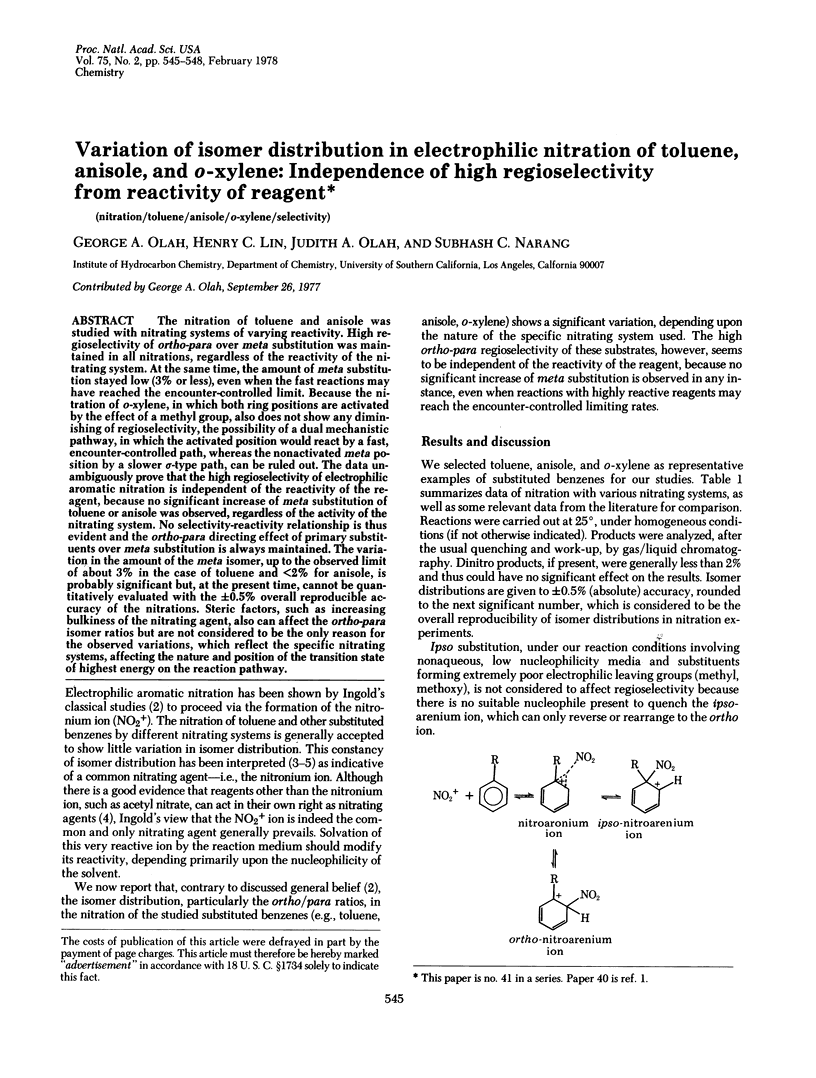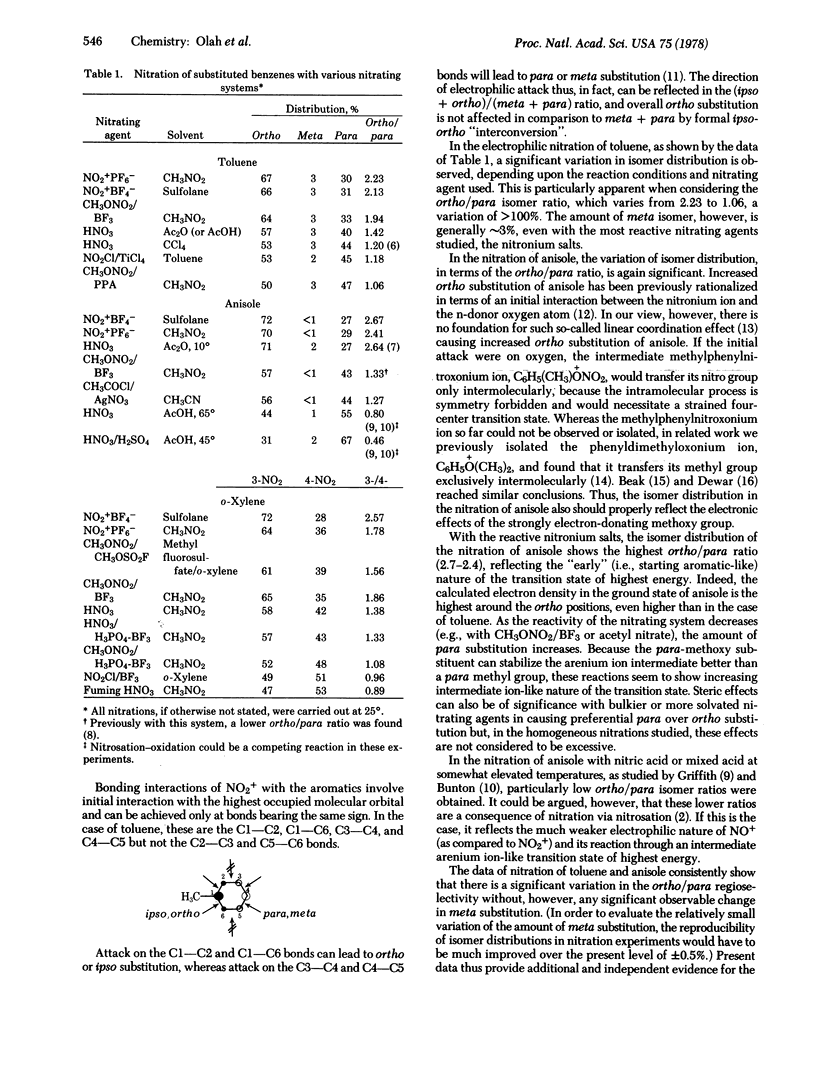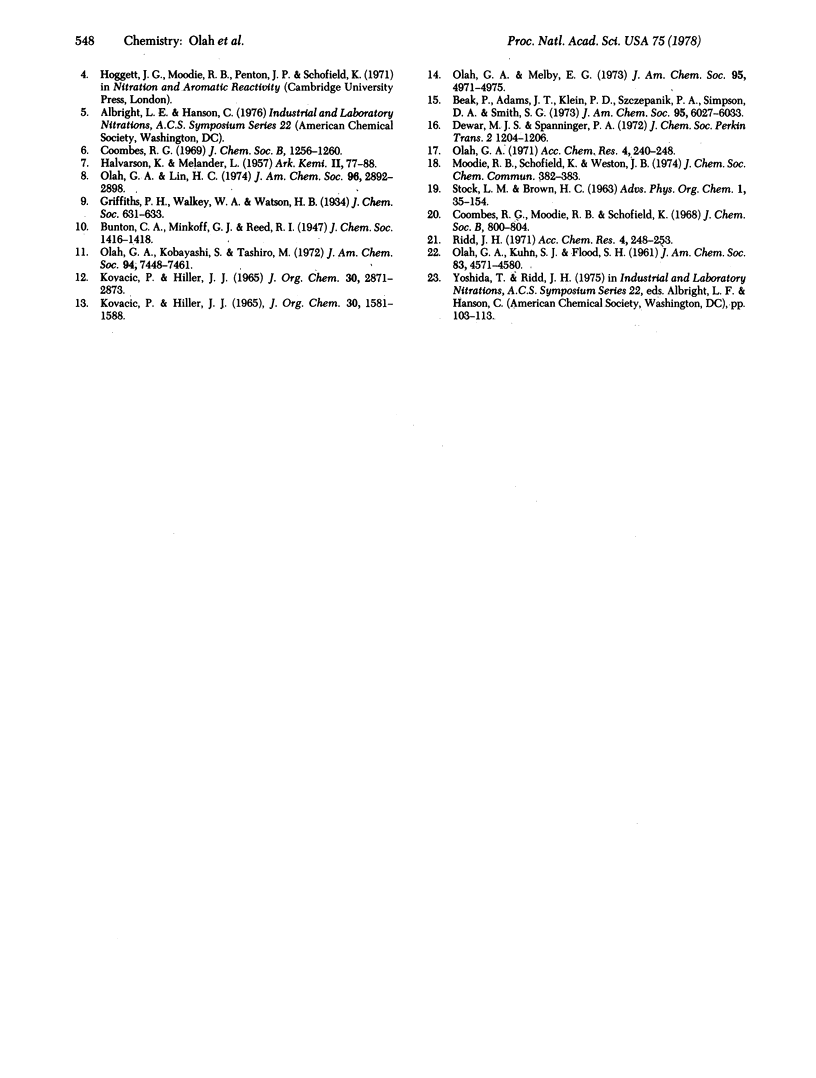Abstract
The nitration of toluene and anisole was studied with nitrating systems of varying reactivity. High regioselectivity of ortho-para over meta substitution was maintained in all nitrations, regardless of the reactivity of the nitrating system. At the same time, the amount of meta substitution stayed low (3% or less), even when the fast reactions may have reached the encounter-controlled limit. Because the nitration of o-xylene, in which both ring positions are activated by the effect of a methyl group, also does not show any diminishing of regioselectivity, the possibility of a dual mechanistic pathway, in which the activated position would react by a fast, encounter-controlled path, whereas the nonactivated meta position by a slower σ-type path, can be ruled out. The data unambiguously prove that the high regioselectivity of electrophilic aromatic nitration is independent of the reactivity of the reagent, because no significant increase of meta substitution of toluene or anisole was observed, regardless of the activity of the nitrating system. No selectivity-reactivity relationship is thus evident and the ortho-para directing effect of primary substituents over meta substitution is always maintained. The variation in the amount of the meta isomer, up to the observed limit of about 3% in the case of toluene and <2% for anisole, is probably significant but, at the present time, cannot be quantitatively evaluated with the ±0.5% overall reproducible accuracy of the nitrations. Steric factors, such as increasing bulkiness of the nitrating agent, also can affect the ortho-para isomer ratios but are not considered to be the only reason for the observed variations, which reflect the specific nitrating systems, affecting the nature and position of the transition state of highest energy on the reaction pathway.
Keywords: nitration, toluene, anisole, o-xylene, selectivity
Full text
PDF



Selected References
These references are in PubMed. This may not be the complete list of references from this article.
- Olah G. A., Hashimoto I., Lin H. C. Electrophilic mercuration and thallation of benzene and substituted benzenes in trifluoroacetic acid solution. Proc Natl Acad Sci U S A. 1977 Oct;74(10):4121–4125. doi: 10.1073/pnas.74.10.4121. [DOI] [PMC free article] [PubMed] [Google Scholar]


